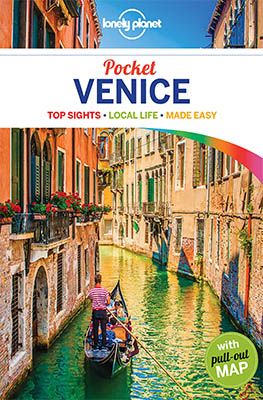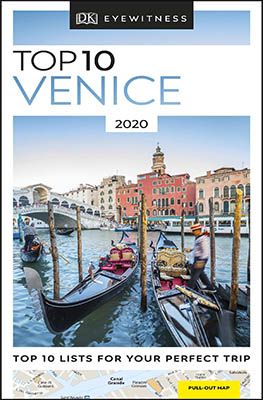During our last tour of northeast Italy, we also visited Venice. It became one of our absolute highlights of the trip. To be honest, we were not expecting that. More than 5 years ago, we visited the city in early spring. At that time, we found it ridiculously overcrowded with tourists. Due to the coronavirus, this time it was very quiet apart from some nice café terraces!
In this blog, we will take you to some of the many highlights of Venice. We will take you along the Canal Grande and the Rialto Bridge, and of course, to Saint Mark’s Square.
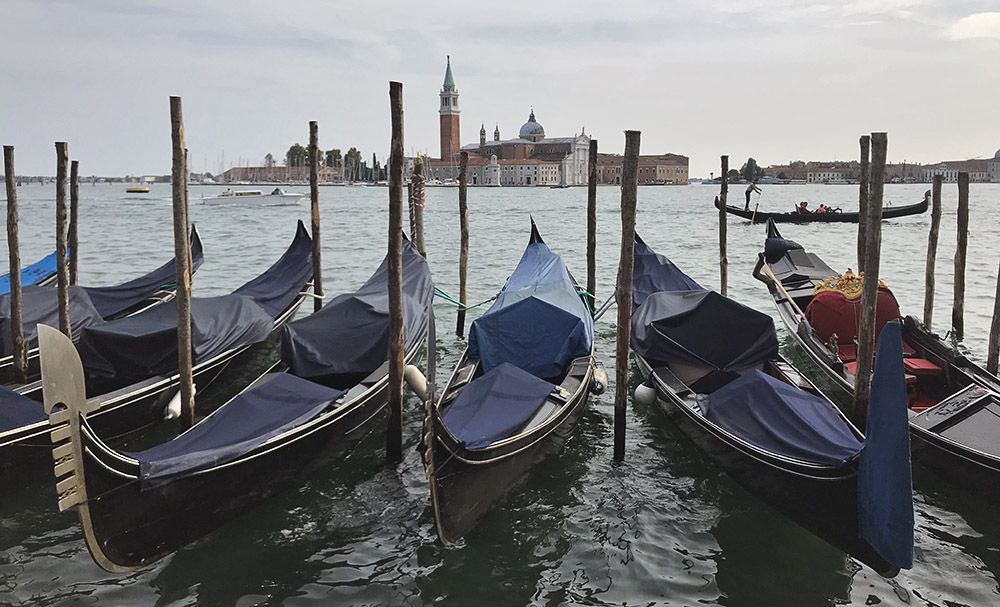
History of Venice
The islands in the lagoon where Venice now lies have been inhabited for many centuries. But Venice only really started to grow after the 2nd century. Residents of the surrounding Roman cities fled to the islands from marauding Barbarians.
After a period under Byzantine rule, Venice gradually turned into a fully independent city-state. As a result, the city eventually became an important hub between the east and much of Europe. By 1300, Venice was the richest city on the European continent. During the Middle Ages, Venice gained valuable trading privileges with the Byzantines. The city also resisted the power of the papacy.
Centuries later, Venice tried in vain to defend Thessaloniki and Constantinople against the Ottomans. A costly war of 30 years followed. The city lost its overseas possessions and most important trading partner. Then Mediterranean trade collapsed with the discovery of new routes to Asia by the Spanish and Portuguese. The plagues of the late 16th and early 17th centuries then killed off the city.
In the centuries that followed, the population decreased drastically. But in the 20th century, the tourist industry grew enormously and the industry became the economic mainstay of the city. Despite a devastating flood in 1966, Venice became one of the most important tourist destinations in Europe.
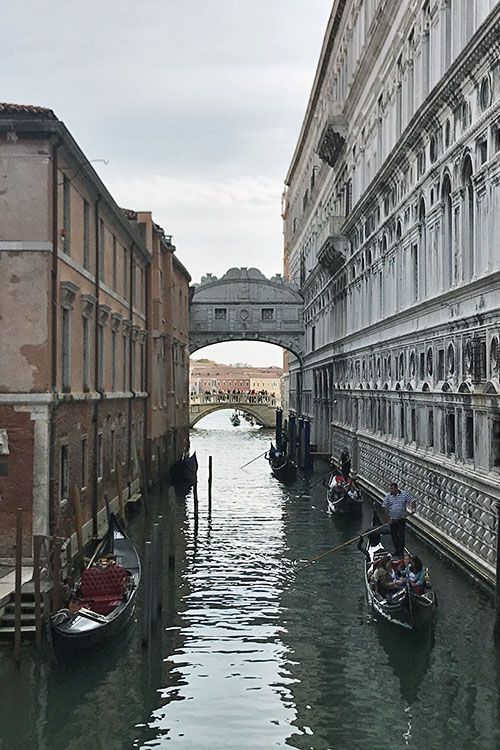
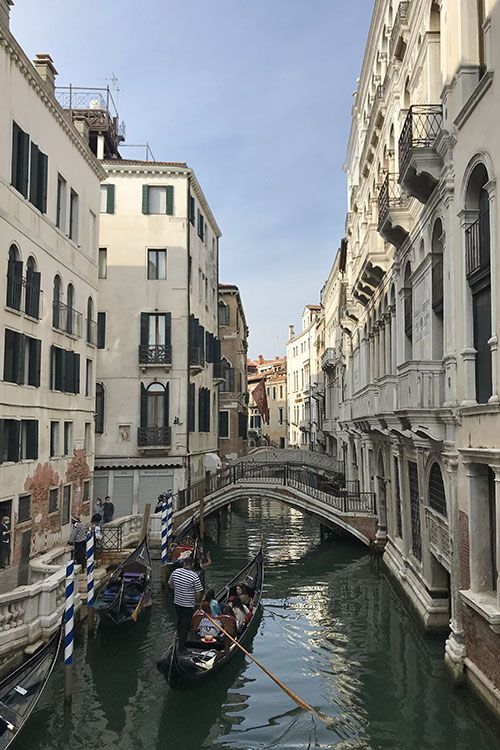
The best highlights of Venice that you just can’t miss
On the day of arrival, we met up with an Italian colleague in the evening. He gave us an important tip for the next day: go out without a city map! Just let yourself get lost and experience the city as a whole. We took his tip to heart and picked only a few, must-see sights from our guidebook. The other highlights we would discover ‘en route’. Or not.
The following are, therefore, the sights of Venice that were our highlights during our visit. Consider these highlights more as a guide, not as an ‘obligatory’ end list. Get lost like we did and experience the city as it must have been centuries ago.
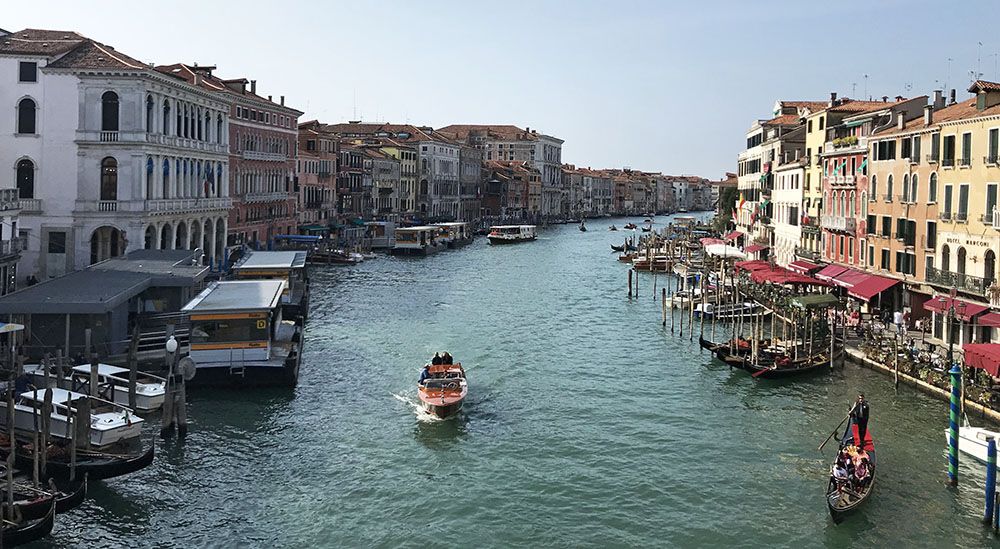
Campo San Polo
We start our visit to Venice at Campo San Polo. Many centuries ago, cows grazed here but in 1493 it was completely paved over. In the centuries that followed, bullfights and the annual (masked) Carnival were held here. The origins of the Venetian Carnival are centuries old. The event still attracts thousands of tourists every year who marvel in particular at the masks. Making masks is a tradition that has been elevated to a serious art in Venice. Wherever you go, you will see shops with masks hanging in the windows.
Campo San Polo, Venice’s second largest square, is little known among city tourists. Nevertheless, it is (still) one of the most popular carnival locations. It is also used for open-air concerts and film screenings during the Venice Film Festival. During our visit, there was no carnival or film festival. For us, however, the square was our first introduction to a peaceful, noiseless Venice. Apart from a few children playing football (illegally), we hardly met anyone.
As it was clearly getting chillier, we ducked into Birraria La Corte for our evening meal. We ended the evening there, enjoying the best dinner of our entire tour.

Canal Grande and the Rialto Bridge
The Grand Canal is the most important waterway in the city. The canal winds along for almost 4 kilometres from the lagoon near the train station to the San Marco water basin. More than 170 palatial buildings stand on the banks of the canal, which is 30 to 90 metres wide. Most of them date from the 13th to the 18th century. There are also several beautiful churches, such as the Baroque Basilica of Santa Maria della Salute.
Despite the coronavirus, it was pleasantly busy on the water. We were amazed by the gondoliers who effortlessly zigzagged between the other traffic to cross the canal. Up until the 19th century, the gondola was practically the only way to cross the Grand Canal. Pedestrians could only cross via the Rialto Bridge.
The Rialto Bridge is one of the biggest tourist attractions in Venice. The bridge was built in the mid-13th century due to the increasing importance of the Rialto market. In the early 15th century, shops were built along the sides of the bridge. The rental income from the shops was intended for the necessary maintenance of the bridge. However, the wooden bridge collapsed several times under the weight of so many Venetians.
At the end of the 16th century, therefore, a stone bridge was built. Against the architect’s prediction, the current bridge never collapsed. We think it’s amazing, considering the large number of tourists we see taking selfies on the bridge!
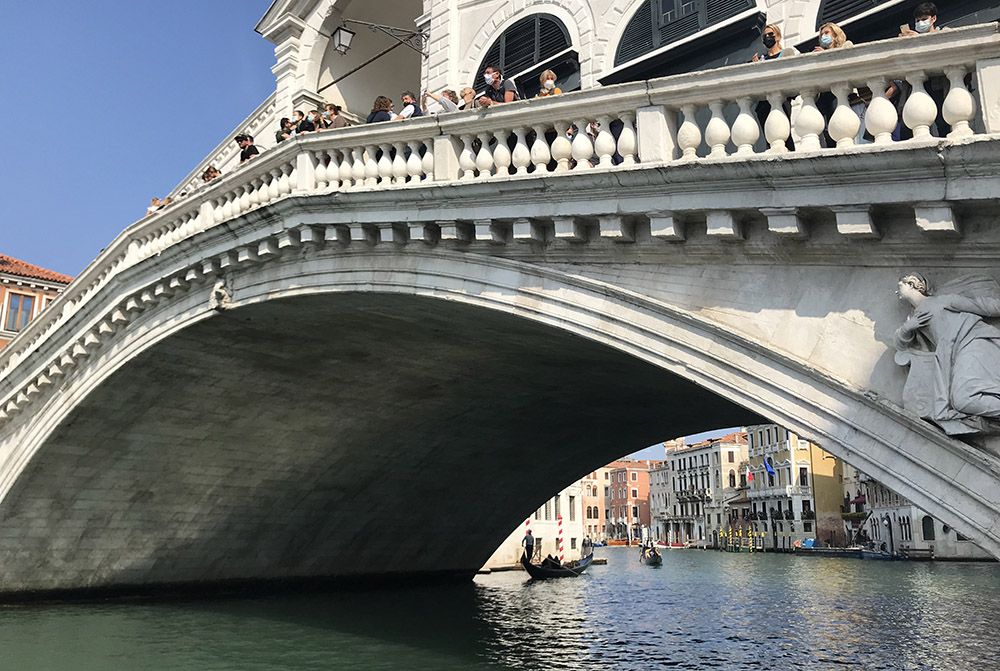
The roof terrace of the T Fondaco dei Tedeschi
Right by the Rialto Bridge, opposite the fish market, is the T Fondaco dei Tedeschi. The early 13th century building is one of the largest and most recognisable in Venice. It was used as a trading post for German merchants and bankers, a customs office under Napoleon and a post office under Mussolini. In 2008, the colossal building was converted into a luxurious-looking shopping centre.
For us tourists, the roof terrace is particularly interesting. If you book online in time, you can visit it for free. Once on the roof terrace, you are treated to a truly fantastic view of the Grand Canal and the Rialto Bridge. We made the most of the 15 minutes you get to enjoy the view!
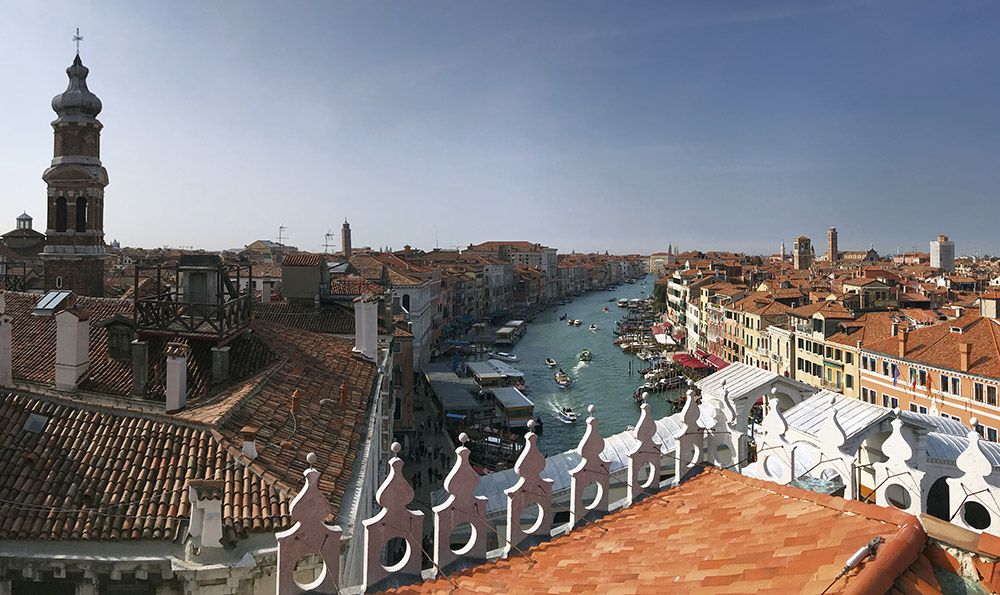
San Giorgio Maggiore
At the Rialto Bridge, we get on the bus boat for a tour. Our destination is San Giorgio Maggiore, one of Venice’s many small islands. The idyllic-looking island is easy to see from Saint Mark’s Square. For this reason, San Giorgio Maggiore has been photographed and painted a lot.
The boat trip there is actually a highlight in itself. On the island, you will find a beautiful, large church and a monastery. In the church, there is a lift that will take you to the bell tower for a cash fee. From there, you have a wonderful view of San Marco.
Besides the church and the monastery, there is an open-air theatre and a relatively large labyrinth. There is also a small marina and an excellent, affordable restaurant with a fine outdoor terrace. Partly thanks to the tranquillity and the view of the city, this island should definitely be included in your city trip!
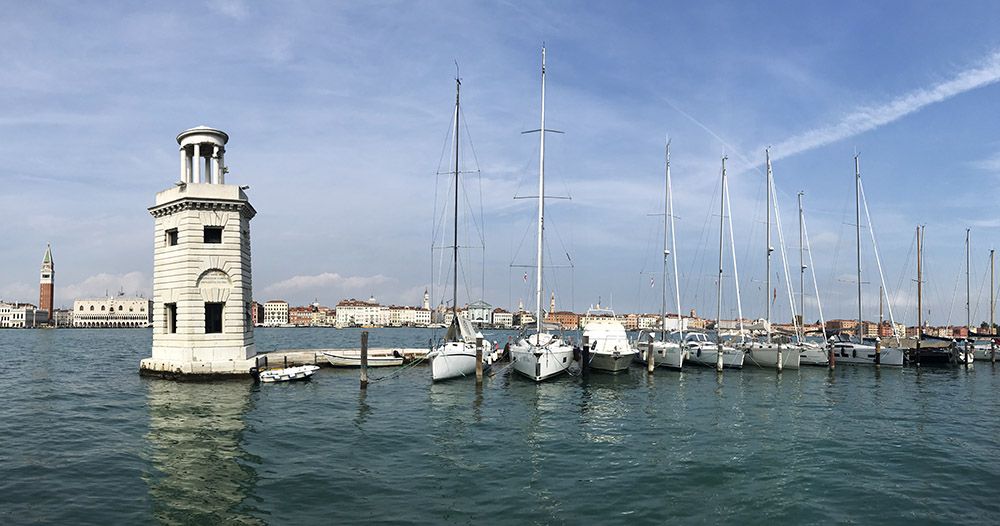
San Marco Square and the immediate surroundings
Your visit to Venice is not complete without a visit to the 9th century Saint Mark’s Square. It is the centrally located, largest square in Venice. The square is regularly in the news because of flooding of water or tourists. During our trip, it was sunny and dry, and almost empty!
At Saint Mark’s Square you will find, among other things, the Doge’s Palace with the ‘Bridge of Sighs’ at the back. There is also the pompous Basilica of San Marco, the Campanile (clock tower), the Biblioteca Marciana and the Torre dell’Orologio. There are also some museums that are definitely worth a visit.
We have dedicated a separate blog to the best sights in Saint Mark’s Square.
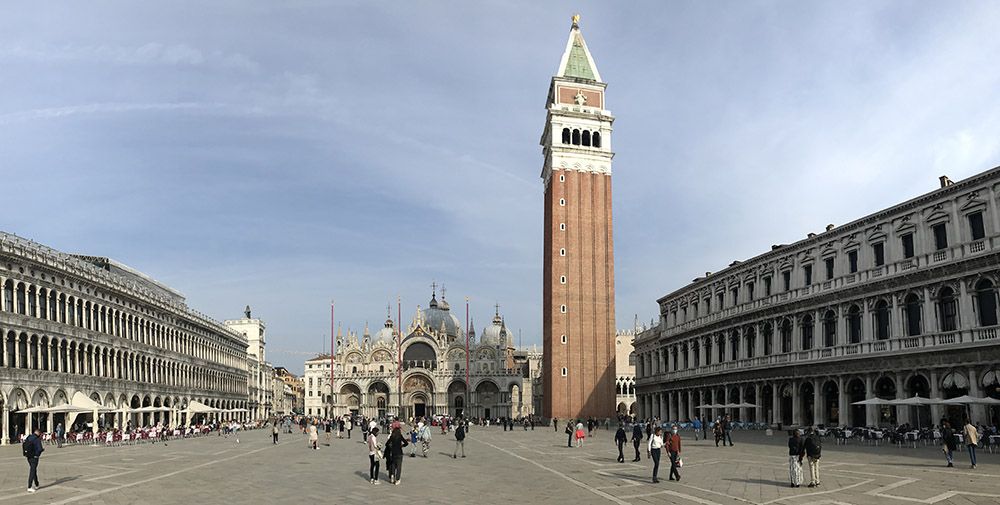
Canareggio and the Jewish Ghetto
From Saint Mark’s Square we walk edback to the station. This time, however, we stayed on the east and north side of the Grand Canal. We ended up in Cannaregio, one of the liveliest districts in Venice. The district has so much to offer that you can easily spend a day here.
One of the places you definitely must see in Canareggio is the Venetian Ghetto. This ghetto from 1516 is one of the oldest in the world. In that period, Venice was much more tolerant towards Jews. But when many Jews fled from Spain and ended up in Venice, it was decided by law that they had to live in the ghetto.
Despite its illustrious past, the Jewish Quarter is now a lovely, quiet place to wander. Book a guided tour or explore the five synagogues on your own. End your visit to the ghetto with some kosher delicacies!
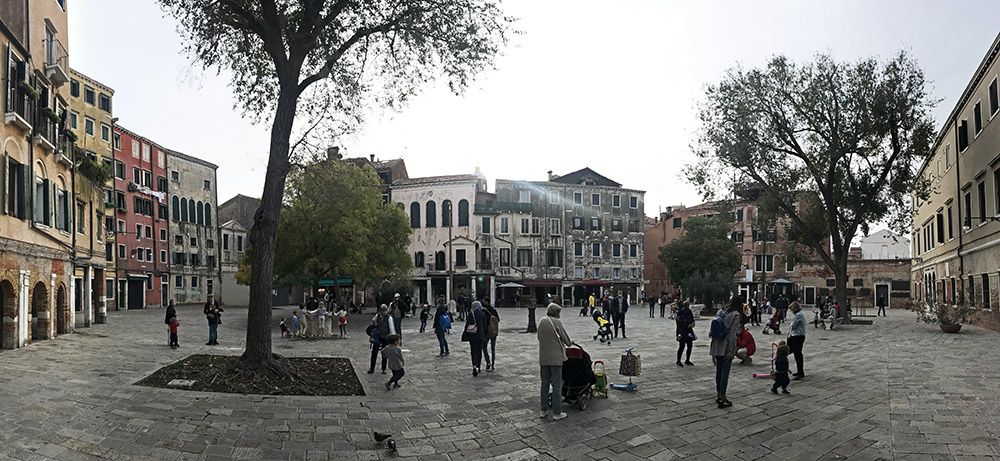
Visiting the highlights of Venice: practical information
These practical tips will help you make the most of Venice’s highlights:
How to get there
Venice can be easily reached by plane. There are two airports near Venice: Marco Polo and Treviso. From here, there are buses and taxis to the city.
Consider taking the train for this city trip. It may take longer than flying, but it is certainly comfortable and affordable. And you get to see the most beautiful mountain scenery along the way!
The northeast of Italy is so much more than Venice. For that reason, it is a good idea to visit this part of Italy by car. If you then take your car into Venice, you can park it in the car parks of Tronchetto and Piazzale Roma. Handy as you are immediately in the city. But very expensive! Therefore, consider parking your car in the suburb of Mestre. That could save you up to €30 per day! From here you can take the tram, train or bus to Venice cheaply and in no time.
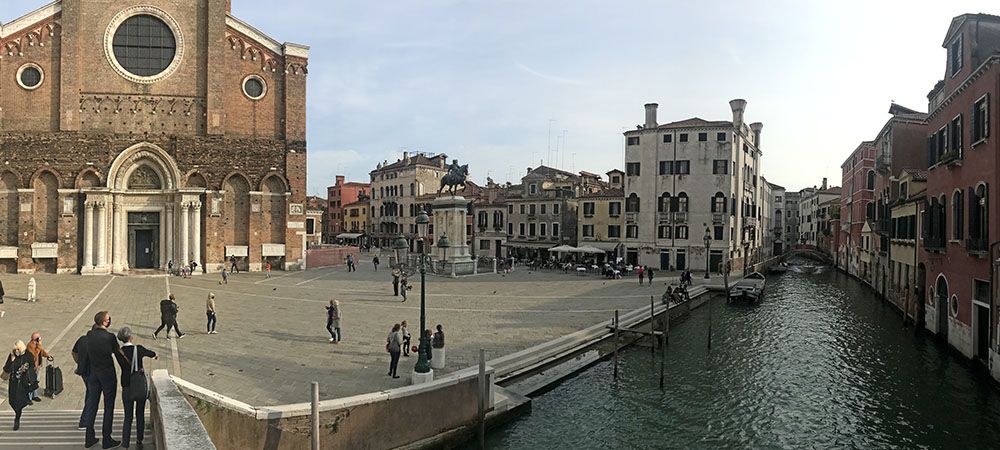
Transportation within Venice
Venice is perfect to explore on foot. But make no mistake about the distances. If you want to go from the west of the city to the east in a short time, then sailing is a good option. In many cases, this not only saves time but is also fun. The beautiful city of Venice should be seen and experienced from the water!
Because of all the canals, the bus boat (vaporetto) is the usual means of public transport. You can buy single tickets for the bus boat but also day tickets. A day ticket costs €20 for unlimited use of the vaporetto. We paid €30 per person for two days of unlimited use. Apart from the bus boat, you can also take the gondola. Expect high fares. A general remark about transport by boat: the sea wind can make it quite chilly. Therefore, even in the hot summer, take a warm jacket with you!
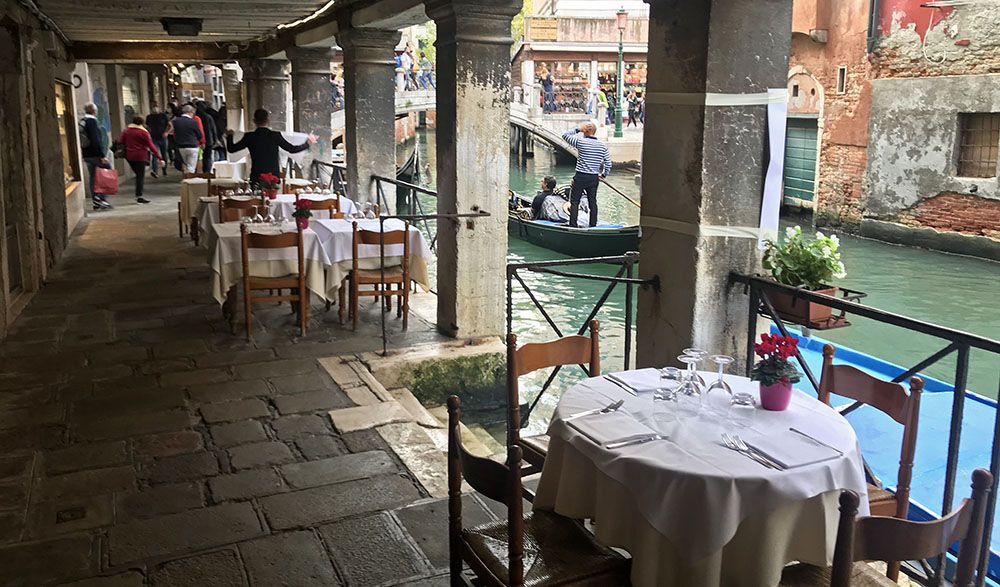
Best time to visit the highlights of Venice
Spring and autumn are, as far as the weather is concerned, the best periods to visit Venice. Winters are mild but, in our opinion, too cold. The summers are nice and warm, but in the narrow alleys, it can quickly become too hot. Especially if there are many tourists walking around.
Accommodation in or just outside Venice
The city has plenty of accommodation in all price ranges. This is the overview of all hotels in Venice. And although you can visit Venice as a day trip, a night in a hotel is definitely recommended. When all the day-trippers have left, the city shows itself at its best.
We slept in a nice apartment in Mestre. In this suburb of Venice, we could easily park our car. An additional advantage is that you pay considerably less for a night’s stay. From Mestre, there is a more than excellent tram and bus connection to Venice.

